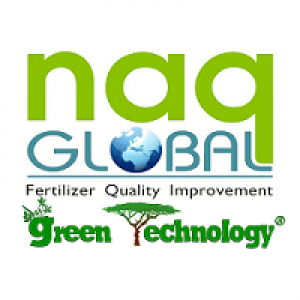
Naqglobal
Uploaded on Jun 26, 2025
Fertilizer dust is more than just a nuisance. It raises serious health, safety, product quality, and environmental issues. Fertilizers may include the contamination of the air by small particles, which may provoke breathing problems and insufficient product efficiency, thus causing loss of shipping or storage. Fertilizer dust control agents enter the picture in that case. The anti-dusting agents are made to minimize or nullify the combustion of dust, thus enhancing safety and operational efficiency. Nevertheless, one should choose an agent with great attention. An ideal solution to dust control should not be contrary to the kind of fertilizer, the type of application being used, safety requirements, and the long-term cost advantages of the solution.
5 Things to Select the Dust Control Agent for Fertilizers
5 Things to Select the Dust Control Agent for
Fertilizers
Fertilizer dust is more than just a nuisance. It raises serious health, safety,
product quality, and environmental issues. Fertilizers may include the
contamination of the air by small particles, which may provoke breathing
problems and insufficient product efficiency, thus causing loss of shipping or
storage. Fertilizer dust control agents enter the picture in that case. The anti-
dusting agents are made to minimize or nullify the combustion of dust, thus
enhancing safety and operational efficiency. Nevertheless, one should choose
an agent with great attention. An ideal solution to dust control should not be
contrary to the kind of fertilizer, the type of application being used, safety
requirements, and the long-term cost advantages of the solution.
1. Compatibility with Fertilizer Type
The compatibility with the particular fertilizer formulation is the first and
paramount in deciding among fertilizer dust control agents. In any case,
whether it is urea, ammonium nitrate, DAP, or complicated mixtures, the anti-
dusting solution should not simply guarantee a chemical reaction with the
fertilizer but even alter the nutrient worth corresponding to that of the
fertilizer. Products occurring in incompatible configurations can lead to caking,
clumping, or even nutrient availability. Submitting to compatibility testing aids
in averting degradation makes sure that the anti-dusting agent does not
interfere with the physical and chemical properties of the fertilizer.
2. Application Method and Ease of Use:
The various fertilizers need varied applications of fertilizer dust control agents,
such as spaying, blending, or covering. The anti-dusting agent chosen ought to
be effortless to apply with the present procedures and equipment you have.
Ready-to-use liquids are mostly easier to use, but some can be diluted or
mixed with other solutions. Even when applied in a fast manner, this method
of dust suppression is comprehensive and within its reach without needing to
complicate or slow the process down. The dust control agent is easy to handle,
saves time, decreases labor expenses, and improves operations in line
production or packaging.
3. Compliance with Health and Safety Regulations:
Safety can be a major issue when choosing anti-dusting agents. NAQ Global’s
dust control agents are non-toxic, biodegradable, and non-flammable, which is
best in those facilities where the safety standards are well-regulated. Not all
anti-dusting agents are the same. Many products from dust control companies
can be highly toxic and contain heavy metals. The information about handling
requirements and health effects can be found in reviewing the Safety Data
Sheets (SDS), which present crucial information. Application of a suitable
fertilizer dust control product will allow workers, as well as the surrounding
environment, to be safe from any dangerous exposure or pollutants.
4. Dust Suppression Efficiency and Durability
Fertilizer dust control agents do not all work the same. Select products of
known record having high levels of dust suppression even when kept in
storage for weeks or transported many miles. Good anti-dusting agents bind
fine particles so that these particles can be prevented from becoming
airborne.
It is vital to perform consistently in different temperatures and conditions of
humidity. The aspect of investing in a suitable agent ensures that the product
looks good, is well-dosed in the field, and that the quality is preserved in the
supply chain.
5. Cost-Effectiveness and Long-Term Value
The price is important, but the total value is significant when selecting anti-
dusting agents. Higher-performing agents minimize product losses and avoid
wear of the equipment as well as downtime because of dust-related problems.
The overall costs of these savings would be more than the cost in the long run.
Seek fertilizer dust control agents that promise to last long. A system that
gives you returns on its own performance will mean your investment delivers
in terms of efficiency and off-budget returns.
Conclusion
The proper selection of the fertilizer dust control agent will help ensure the
quality of the products, the safety of the workers, and the work efficiency.
Chemical compatibility, application ease, safety compliance, and cost-
effectiveness all play a part in determining the optimal solution. Fertilizer
coating material, as well, should be carefully chosen not only to reduce dust
levels but also to create value throughout the chain.
Source Link:
https://naqglobal.weebly.com/blog/5-things-to-select-the-dust-control-
agent-for-fertilizers

Comments